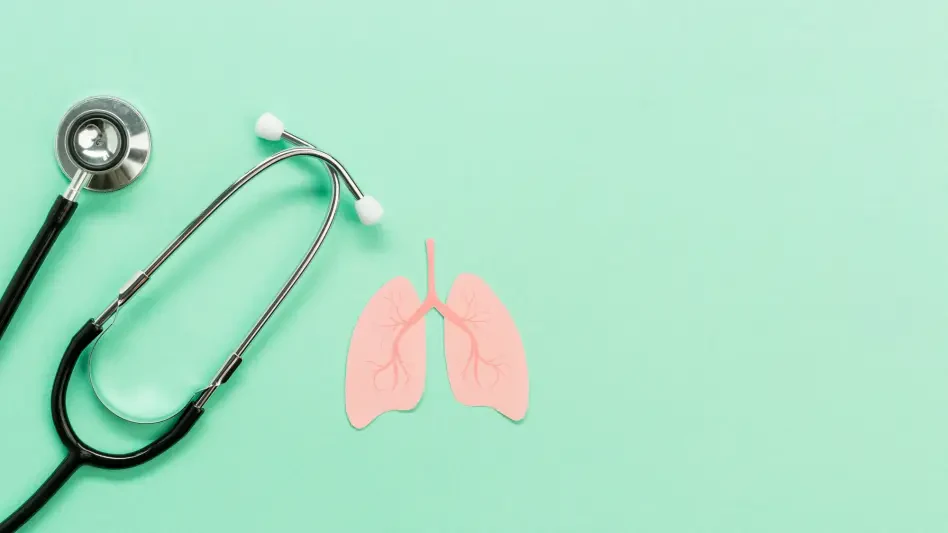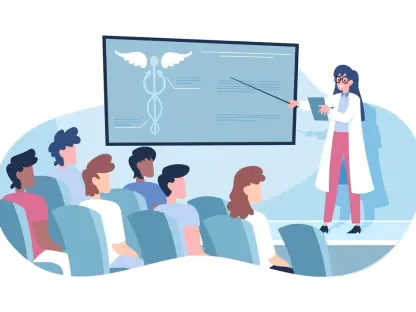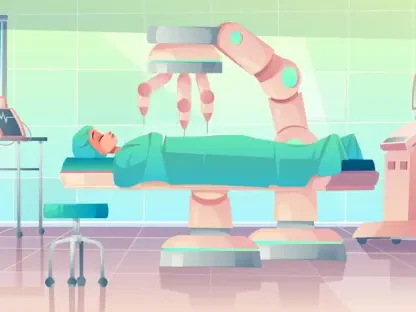What if the simple string of numbers on a mailbox could predict a person’s odds of surviving lung cancer? In communities across America, zip codes are more than just postal identifiers—they’re silent indicators of health destinies, often determining who gets timely care and who doesn’t. For those battling non-small cell lung cancer (NSCLC), one of the deadliest forms of cancer, geographic location can mean the difference between early detection and a late-stage diagnosis, between cutting-edge treatment and limited options. This hidden map of health disparities reveals a troubling truth about systemic inequality, urging a closer look at how something as ordinary as an address can wield extraordinary power over life and death.
The significance of this issue cannot be overstated. Lung cancer remains a leading cause of death in the United States, claiming over 120,000 lives annually, according to the American Cancer Society. Yet, not every patient faces the same fight—where someone lives often dictates their access to screening, specialists, and survival resources. Zip codes, as proxies for social determinants of health like income, education, and environmental risks, expose a fractured healthcare landscape. Understanding and addressing these geographic disparities is not just a medical challenge but a moral imperative, demanding action to ensure that a patient’s address doesn’t become their prognosis.
Unveiling the Hidden Health Map: Does Location Define Destiny?
Geography plays a pivotal role in shaping health outcomes, often in ways that go unnoticed until a diagnosis hits. Zip codes encapsulate a range of social factors—economic status, access to medical facilities, and even exposure to pollutants—that directly influence lung cancer risks and outcomes. In urban centers with top-tier hospitals, patients might access advanced therapies, while those in rural areas struggle to find even basic screening tools. This disparity isn’t just theoretical; it’s a lived reality for millions, highlighting how deeply embedded location is in the fabric of healthcare inequality.
Beyond mere convenience, living in certain areas can expose residents to heightened cancer risks. Industrial zones or regions with high smoking rates, often tied to specific zip codes, show elevated lung cancer incidence due to environmental toxins and lifestyle factors. Data from the National Cancer Institute indicates that economically disadvantaged areas bear a disproportionate burden of these risks, compounded by limited health education. The result is a vicious cycle where place not only predicts disease prevalence but also restricts the tools needed to fight it.
The Geography of Inequality: Social Factors Fueling Lung Cancer Gaps
Social determinants of health, or SDOH, create a stark divide in how lung cancer impacts different communities. These non-medical factors—ranging from income levels to racial demographics—often cluster within specific zip codes, painting a picture of systemic inequity. Low-income neighborhoods, for instance, frequently lack nearby cancer screening centers, forcing patients to delay critical early detection measures like low-dose CT scans. Such barriers translate into diagnoses at advanced stages, where treatment options dwindle and survival rates plummet.
Environmental and cultural elements tied to location further deepen these disparities. Areas with historical ties to heavy industry or tobacco use see higher rates of NSCLC, often affecting populations with fewer resources to navigate the healthcare system. Studies reveal that rural patients, constrained by long travel distances to specialists, are 20% less likely to receive timely care compared to urban counterparts. This geographic penalty underscores the urgent need to address not just medical needs but the societal structures that shape them.
Dissecting the Divide: Zip Codes and the Cancer Care Journey
The influence of zip codes permeates every stage of lung cancer care, revealing layers of disadvantage that compound over time. At the outset, risk and incidence vary widely by location—areas with poor air quality or high poverty rates report up to 30% higher lung cancer rates, driven by both environmental hazards and limited preventive education. These communities often lack the infrastructure to combat these risks, setting the stage for worse outcomes before a diagnosis is even made.
Once diagnosed, the challenges intensify based on address. Early detection, a cornerstone of effective treatment, remains out of reach for many in under-resourced zip codes due to scarce access to screening tools—rural patients, for example, are often diagnosed at stage IV, when survival odds drop below 5%. Treatment access fares no better; shortages of thoracic surgeons in certain regions mean patients might receive radiation instead of potentially curative surgery. Delays caused by transportation or financial hurdles further erode survival chances, with each week of postponed care increasing mortality risk by a measurable margin.
Hearing the Human Cost: Stories and Expertise on Geographic Barriers
Behind the data lie real stories of struggle and insight from those on the front lines of healthcare. Steve Emrick, Senior Vice President of Clinical Informatics Solutions at PurpleLab, emphasized in a recent webinar that while zip codes can predict disease patterns, the true hurdle is turning that knowledge into tangible change. His perspective points to a critical gap—awareness alone isn’t enough; actionable interventions must follow to alter the trajectory for at-risk populations.
Patient experiences bring these statistics to life with heartbreaking clarity. Picture a rural NSCLC patient, unable to cover the cost of weekly 100-mile trips to a treatment center, missing vital chemotherapy sessions as a result. Racial disparities add another dimension, with research showing non-white and Hispanic patients often diagnosed younger yet less likely to receive essential PET scans for staging. These narratives and expert voices collectively illustrate that zip codes aren’t neutral—they’re powerful forces shaping who gets a fighting chance and who falls through the cracks.
Charting a Path Forward: Solutions to Bridge the Zip Code Gap
Tackling the disparities tied to geography demands innovative, multi-pronged strategies rooted in data and collaboration. Leveraging real-world data (RWD) offers a starting point—by analyzing patient outcomes by zip code, healthcare systems can pinpoint high-risk areas and deploy resources like mobile screening units to address specific gaps. Such targeted efforts could transform early detection rates in underserved regions, giving more patients a shot at survival.
Policy and partnerships also hold transformative potential. Advocating for expanded insurance coverage for screening tools and funding transportation assistance for remote patients can dismantle logistical barriers. Simultaneously, boosting health literacy through community outreach in vulnerable zip codes—using culturally tailored messaging—can combat mistrust and encourage participation in screenings and clinical trials. Finally, creating financial support programs to offset treatment costs ensures that access to innovative therapies isn’t dictated by income or location, paving the way for a more equitable fight against lung cancer.
Looking back, the journey to understand how zip codes influence lung cancer outcomes revealed a landscape marked by profound inequity, where geography often overshadows genetics or personal choices in determining survival. Reflecting on the stories of patients delayed by distance and the data exposing systemic gaps, it became clear that change was not just possible but necessary. The path ahead demands a commitment to targeted interventions—scaling up mobile health units, pushing for policy reforms starting from 2025 onward, and fostering trust in communities long overlooked. Only through such sustained efforts can the invisible lines of zip codes cease to define who lives and who doesn’t in the battle against this relentless disease.









